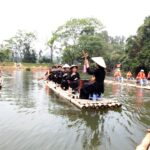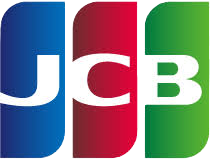Unlike the Cham Culture Museum in Da Nang, the museum in Nui Thanh district is a private museum; with a name that has nothing to do with Cham Culture – Chu Lai Museum. Chu Lai Museum is currently located in an open space of about 5 hectares on the coastal route, the border between Quang Nam and Quang Ngai, in the Chu Lai resort area. The museum belongs to the Central Investment Joint Stock Company, with a transaction address in Tam Nghia commune, Nui Thanh district, Quang Nam province.
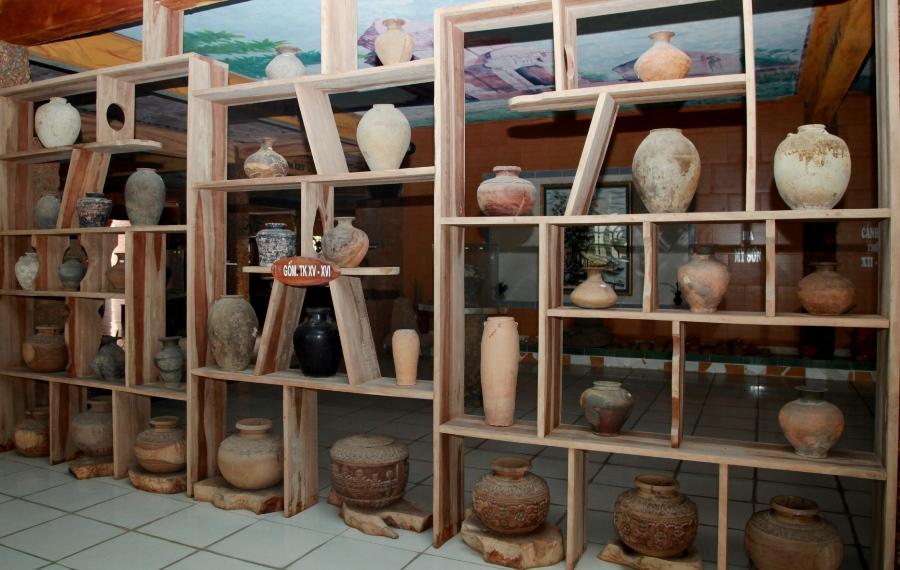
Chu Lai Museum can be considered a magnificent private museum of the Central region when it owns thousands of artifacts from Vietnamese dynasties from the 18th – 19th centuries and many Cham cultural artifacts. To have the huge number of artifacts displayed in the museum, its owner spent about 40 years collecting, from artifacts from the history of Vietnam to artifacts of cultural exchange with Cambodia, China, Japan, Thailand and Western countries. These artifacts include ceramics, stone, and metal from the Sa Huynh culture period to the early 20th century. Through the exhibition, we aim to introduce to tourists and local people the history of Vietnam from the time of nation building to modern times. Including Dong Son culture, Pre-Sa Huynh and Sa Huynh culture, Champa culture, Oc Eo culture…; Vietnamese history, regional history; 18th-20th century world clocks; late 20th century mobile phones; 18th-20th century Central Highlands bead collection; 18th-20th century bell and rattle collection; 17th-19th century firearms collection…
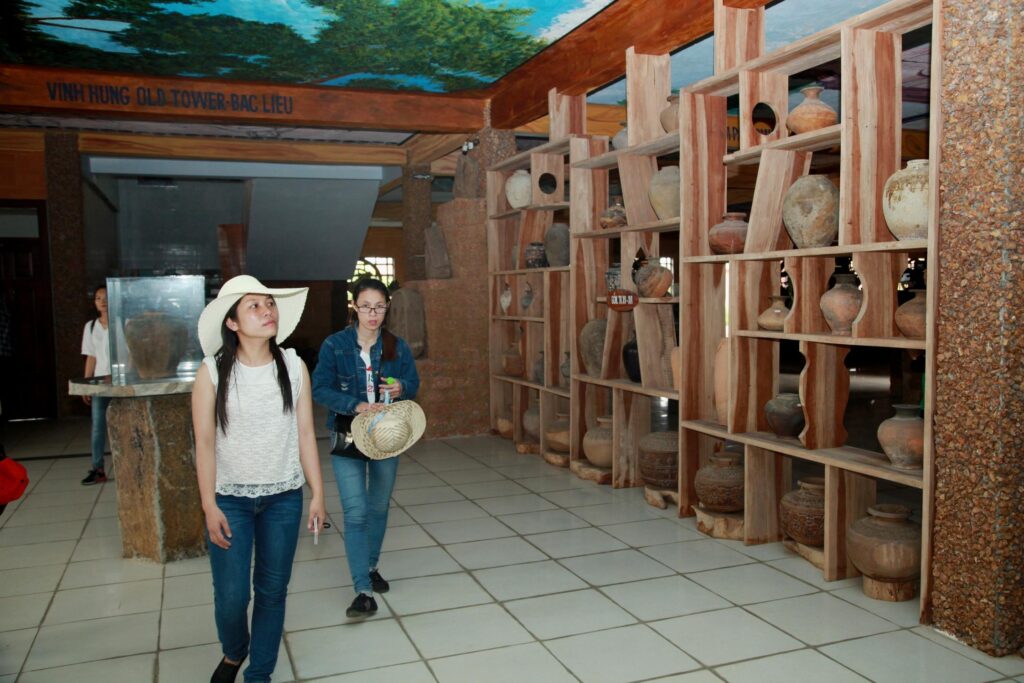
Visiting the museum and admiring each antique, visitors can take a trip back in history, learning about the origins of national culture through the Nguyen, Mac, Tay Son dynasties, and the Hau Sa Huynh culture… In addition to ceramics and ancient interior decorations, the exhibits at Chu Lai Museum also include weapons, household items of ancient mandarins, cannons and bullets. The most numerous are ceramic and stone artifacts. Visitors seem to be lost in another world, a world of stories told in ceramics and stones with collections of Central Vietnamese ceramics from the 15th-20th centuries, and collections of pestles, rollers and grinding tables from the 8th-12th centuries in the South.
Another highlight is that more than half of the area of Chu Lai Museum is used to display artifacts related to Cham culture. These artifacts are mostly displayed in a closed space. Many artifacts are considered very valuable, such as silver Buddha-shaped thank-you cards affixed to Champa scripture columns in the 9th-10th centuries, bronze Kendi, silver and gold Linga – Yoni idols… The Kendi set alone, if studied carefully, one can understand the period of the prosperous Champa dynasties
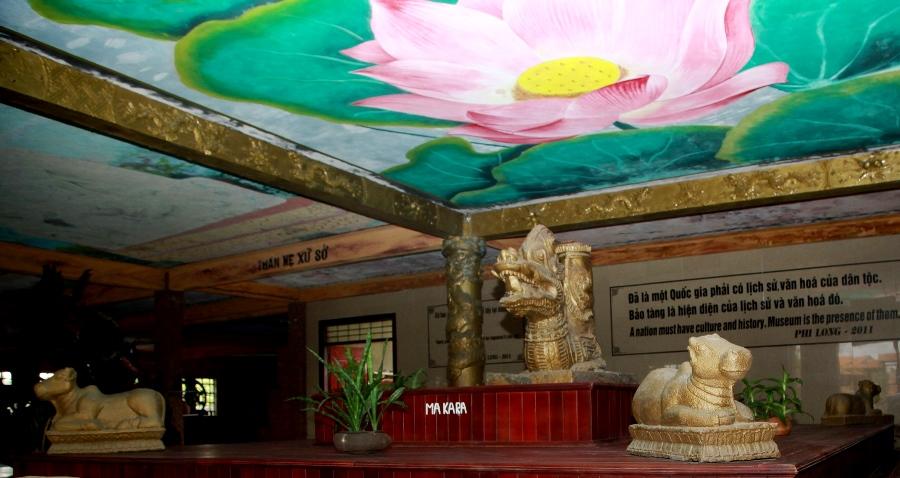
The collection related to Cham culture displayed at the museum is humongous. From dugout canoes, mills, mortars, production tools, statues of gods, sea monsters, religious symbols… Each artifact contains a story about itself or related to the museum owner’s collecting journey. Not many people are unfamiliar with the Linga – Yoni symbol in Cham culture, but at Chu Lai Museum, visitors will see many Linga artifacts. This can be considered a unique feature of the museum.
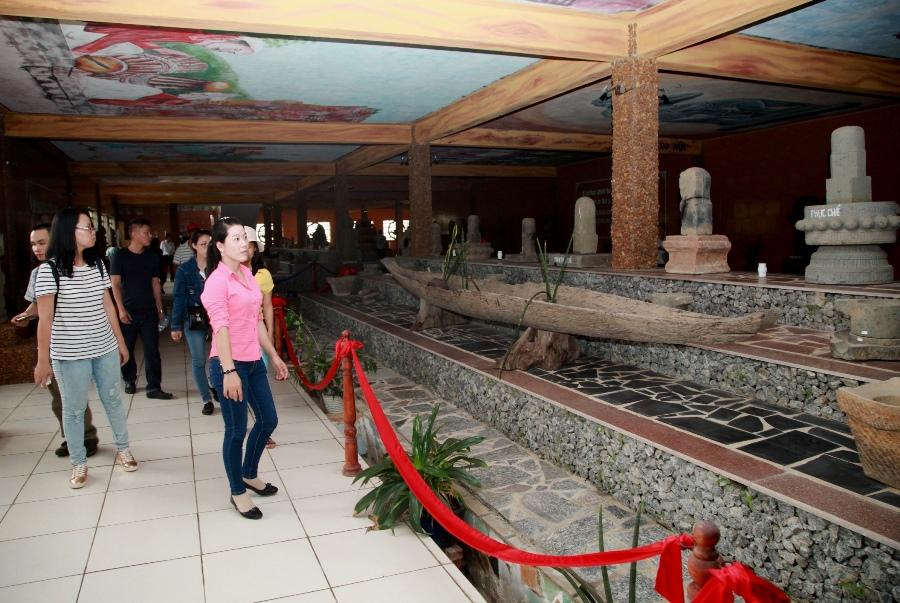
From the museum’s information, visitors can have a basic understanding of the Champa dynasties, and better understand the symbol of Cham culture – Linga. The Linga statue is carved with the face of Shiva, called Linga with a human face or Mukhalinga. A Mukhalinga can have one or more faces of Shiva and based on that, it has different names such as: Trimukhalinga (3 faces), Chaturamukhalinga (4 faces), Panchamukhalinga (5 faces). The Linga carved in the form of a flame or the topknot of Lord Shiva is called Jatalinga. The layered Linga is a Linga divided into sections representing the three aspects of the Hindu Godhead: The bottom cubic section represents Brahma, the middle octet-shaped section represents Vishnu, and the top circular section represents Shiva. Linga statues with a gold or silver plated metal shell covering the outside will be placed in the towers of the Cham culture. And that layer is called Kosa; only when it comes to big, important ceremonies of the year, people will remove the Kosa to clean the Linga statue…
In the closed exhibition space of the museum, the museum owner has had reliefs made on the walls and paintings painted on the ceiling depicting scenes of Cham cultural activities and festivals in a lively way. This is perhaps another highlight to increase the attraction of the museum.



